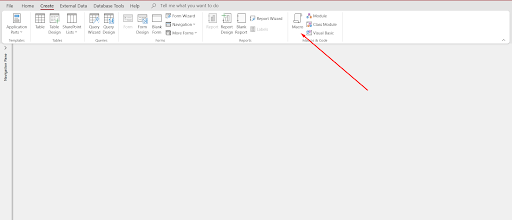MS Access Macros: The Complete Guide.

One of the most powerful extensions of the popular database management system Microsoft Access is the ability to automate repetitive tasks using macros. Whether you’re a business owner, data analyst, or MS Access developer, learning how macros work can improve your angel experience. This guide covers everything you need to know about MS Access macros, from their purpose to how to use them effectively.
MS Access Macro Overview
You can see how long it takes to perform the same task multiple times (in a loop) in MS Access. This is where macros come in handy.
This article explains the basics of setting up basic macros to make your library run quickly and efficiently.
What are macros in MS Access?
Macros in Microsoft Access are tools that allow you to create programs in your database. A task is a set of instructions that Access executes when it runs. Think of it as a small application that performs commands such as opening files, creating reports, and applying application filters..
Why use macros at Microsoft?
Using macros not only saves time but also reduces the chance of human error. For example, if you need to apply the same filter or run the same report several times a day, you can use a macro to do this with one click. This is especially useful for users who do not know a programming language but want some level of automation.
Types Of Macros
MS Access has two main types of macros.:
standalone macro
Standalone macros are created independently of other database objects. You can trigger it by inserting a button, form, or event in the database. These macros are stored as separate and reusable objects in the library..
Embedded Macros
Embedded macros are stored within forms or reports. They are created and saved as part of the object itself. You can’t reuse them like standalone macros, but they’re useful for performing actions that are specific to a particular form or report.
How to Create a Macro in MS Access
Step-by-Step Process
- Open an MS Access database.
- Click the Build tab on the ribbon.
- Select Macro from the drop-down menu.
- To add a task, select it from the task list.
- Save the macro and assign it to a button or event.
Instructions for creating macros
Keep it simple: Break complex tasks into smaller, manageable parts.
Use a descriptive name: Give your macro a descriptive name to help you identify it.
Check your macros regularly. After creating the macro, be sure to test it to make sure it works correctly.
Learn how macros work
What is a macro action?
A macro action is another function that a macro performs. For example, actions can include opening a form, running a query, applying a filter, and so on.
Commonly used macro operations
OpenForm: Open a form in the database.
RunQuery: Runs a saved query.
SetValue: Set a value for a field in a form or report.
Using conditional logic in macros
What is conditional logic?
Conditional logic allows macros to perform actions based on certain conditions. This increases the flexibility and functionality of macros. For example, you can set conditions to print a report when certain information is available.
How to Enable Trusted Locations
To run macros safely:
Go to File > Options.
Select Trust Center and click on Trust Center Settings.
Choose Trusted Locations and add your database folder.
Debugging Macros in MS Access
Common Macro Errors
Action Failed: This error occurs when the macro tries to perform an invalid action.
Undefined Macro: This happens when a macro referenced in the database doesn’t exist.
Decoration
Use macro error handlers to identify and handle errors.
Always make sure the macro is properly linked to the event or button it should trigger.
Advanced macro technology
Automatic data entry
You can create macros that automatically fill fields based on other data in the database. This is useful for forms that require repeated input of information.
Creating Custom ButtonsMacros allow you to create custom buttons that perform specific tasks, such as opening a report, updating a record, or closing a form.
Macros and VBA in Microsoft Access
Differences between Macros and VBA
Macros are useful for basic automation, but Visual Basic for Applications (VBA) is more flexible and powerful, allowing for more complex operations..
When to Use Macros vs. VBA
If you’re new to automation, macros are a good starting point. However, if you need more advanced functionality, VBA might be the better choice.
Performance Optimization for Macros
How to Speed Up Macros
- Optimize your queries to reduce load times.
- Break down complex macros into smaller, modular macros.
- Reducing Resource Usage
- Limit the number of actions in a single macro to prevent your database from slowing down.
Practical application of MS Access macros
- Business automation
Macros allow you to automate routine tasks such as generating invoices, sending reports, and updating inventory records.
- Data management
Macros can be used to simplify tasks such as importing data, performing batch updates, and cleaning databases.
The conclusion is that
MS Access macros are useful tools for automating repetitive tasks and improving efficiency. Whether you’re new to database management or an experienced user, learning how to create and use macros can improve your workflow. From automating simple tasks to combining complex operations, macros offer a wide range of possibilities.

Read Our Other blogs
